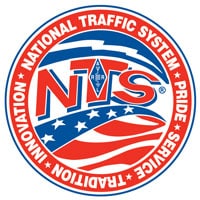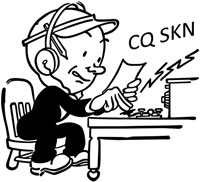This is a fortnightly newsletter about the New Zealand Net.
If you would like to be notified by email message when a new edition is published, please contact ZL1NZ.
Newsletter change
In the past, I have prepared two versions of each newsletter: one that goes out as an email and a second one (just like this) on the website.
To save time and effort, I propose to just have the website version from now on. If you’re subscribed to the newsletter, you’ll still get an email, but it will consist primarily of a link to the website version.
I hope this won’t be inconvenient for anyone but, if it is, please let me know.
Highlights
We have another new record for NZ Net: 12 stations checking into a single net session. Grant ZL2GD was the busy Net Control on Tuesday 5 November. FB OM!
I have heard from a few people that they often listen to the net without checking in. If that’s you, please check in. You’ll help keep all of us on our toes – and maybe help Grant set another record!
Heading into summer, the propagation is certainly changing. Local signals remain strong for me, but our friend Manny VK3DRQ has all but disappeared – although we know he’s keying as hard as he can. 🙂
CW Nets in the 1980s
 Paul ZL1AJY found this article in a 1987 copy of Practical Wireless. Written by a British amateur, it describes the National Traffic System in North America where, as the author enviously notes, rules for 3rd party traffic were much more relaxed than in the UK. Traffic nets (and, I might add, phone patches) were commonly heard across the HF bands when I was a teenage operator in Toronto. We didn’t have “unlimited national calling” and all the other phone deals we have now – toll calls were a real indulgence – so sending a message at no cost via amateur radio was quite appealing.
Paul ZL1AJY found this article in a 1987 copy of Practical Wireless. Written by a British amateur, it describes the National Traffic System in North America where, as the author enviously notes, rules for 3rd party traffic were much more relaxed than in the UK. Traffic nets (and, I might add, phone patches) were commonly heard across the HF bands when I was a teenage operator in Toronto. We didn’t have “unlimited national calling” and all the other phone deals we have now – toll calls were a real indulgence – so sending a message at no cost via amateur radio was quite appealing.
I would be interested in hearing from Net members about the situation in New Zealand at that time. Does anyone recall handling traffic back then?
More military CW
A few issues back, I provided an audio recording of a Russian military station sending traffic on CW in the 40m amateur band.
Have you ever listened to the Chinese military CW stations? There’s a loud one on 7397.0 kHz every evening. Most of their transmission is a loop, calling another station but – if you’re patient and lucky – you might hear them sending a brief burst of number groups as in this recording I made on 23 October around 0930Z. It’s interesting that the first set of number groups is sent faster than the loop, and the next set is sent even faster – maybe it’s a code practice session! 🙂
Have you found any interesting non-amateur CW transmissions?
Straight Key Night
Summer SKN is coming fast: Sunday 1 December from 9pm to 10pm on 80 metres.
We had a great turnout for Winter SKN so please dust off your straight key and join the fun. No bugs, paddles, cooties or keyboards. Just straight keys please.
Ready to play? NZ Net Trivia
I mentioned this idea a few newsletters back, and I didn’t get any takers – but I don’t give up easily so here it is again:
For those who would like to learn (or just practise) traffic handling, I’d love to introduce NZ NET Trivia.
The idea is that every Wednesday I would send a piece of formal traffic to all ops who have told me they are interested in playing. The message would contain a New Zealand trivia question.
Your job would be to find the answer (hello Google!) and send the answer back to me as a formal message during any subsequent NZ Net session.
If you’re interested in this, please let me know (by email or QTC) and I will kick it off as soon as I have at least one participant.
BIG CASH PRIZES will not be offered, but I think it would still be a lot of fun.
Net tip: Checking in with traffic
A net member recently asked me: “How do I check into the net and indicate that I have traffic for another net station?”
Here’s how to do it. In my example, NCS means Net Control Station and we’ll assume that ZL1ABC has just called into the Net and is being acknowledged by NCS:
NCS: ZL1ABC GE 599 HW?
ZL1ABC: GE 599 QTC1 ZL4XYZ (meaning “I have one message for ZL4XYZ”)
NCS: R <AS>
After all stations have checked in, NCS will ask the traffic-exchanging stations to standby, while excusing all other stations, like this:
NCS: ZL1ABC ZL4XYZ <AS> = ALL OTHER STATIONS QRU QNX TKS 73 dit dit
NCS: ZL1ABC QNK ZL4XYZ (meaning “ZL1ABC please establish contact with ZL4XYZ and send your traffic on this frequency”)
ZL1ABC: ZL4XYZ DE ZL1ABC QTC1 HW?
ZL4XYZ: 599 QRV
ZL1ABC then sends traffic and any necessary fills until hearing “QSL” from ZL4XYZ.
It doesn’t have to be exactly like the above, but will probably be close. And don’t worry about getting it wrong, we are all learning and the best way to learn is to give it a go!
After you have sent your traffic and received a QSL from the receiving station, you would turn the freq back to NCS, with something like:
ZL1ABC: NW QRU TKS NET K
NCS would then formally close the net.
One further point: In our example above, ZL1ABC doesn’t need to know whether ZL4XYZ has already checked into the net, or plans to do so. If ZL4XYZ does not check in, then ZL1ABC can relist their traffic during another net session. If the traffic were urgent, then we would look to use relay stations, but that’s another subject.
Suggestions?
If you have suggestions on how to make the NZ Net better, or things you’d like to see covered in these updates, please contact ZL1NZ. You might even like to write something for the newsletter.
Thanks for reading, and I hope to see you soon on the NZ Net!
—
Neil Sanderson ZL1NZ, Net Manager
New Zealand Net (NZ NET)
3535.0 kHz at 9pm NZT Mon-Fri



